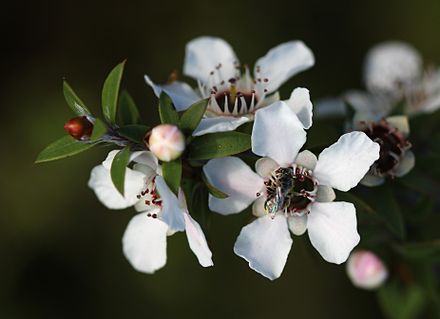Bee Blog November 2019
I am Gerald Bushby (pronounced bush bee!) a beekeeper in Weston on the Green, a small village in Oxfordshire. I am going to be writing a monthly blog about the bees in my apiary. I hope you will find it interesting. I should start by saying that I am not an expert, having only kept bees for three years. Anything I say is my own personal opinion; I accept that there may often be other views and opinions.
G-day from down under!! I am currently in Western Australia experiencing an Australian Spring rather than a British Autumn. Beekeeping is as popular a hobby here as it is in Great Britain and is a very important industry in Australia.
Prior to European settlement Australian Aboriginals consumed “sugargag”, honey from native bees found in tropical areas. There are over 1,500 species of native bees in Australia, some are social whilst others live alone. Most of the native bees are stingless or have stings not dangerous to humans. The native bees however do not produce large amounts of honey.
It is recorded that the first imported honey bees in Australia were contained in a hive that arrived on a convict ship, the Isabella, which sailed from the United Kingdom to Sydney in 1822. It must have been an interesting voyage given that it used to take four months for a sailing boat to reach Australia in the 19th Centuary. It was reported in the Sydney Gazette that on arrival the number of bees was reduced to 476 and the quantity of honey stores was reduced to little more than half a pound. There must have been some sharp eyed Australians back in 1822 to count 476 bees.
Once colonies of bees started arriving in Australia they soon spread by swarming. Records of the first wild nests date back to 1838. Their spread may have been limited by the lack of water, low rainfall and frequent bush fires, but they adapted and survived. By 1846 hived honeybees had also been taken to the south, then to Queensland in 1851 and Western Australia, where I am now, in 1881. By the 1930’s they were widespread throughout the continent.
Commercially Australia produces approximately 25,000 to 30,000 tonnes of honey a year. Popular types of honey include Leatherwood, Blue Gum, Yellow Box and Karri, each named after the trees that produce the blossom the bees visit and each with a distinctive flavor.
This is the part of the world where the famous Manuka Honey is produced. Most Manuka Honey comes from New Zealand but some is produced in South East Australia. All honey has been known for a long time to have therapeutic, antibacterial and healing properties. Historically it was incorporated into dressings to rapidly help to clean pus or dead tissue from infected wounds, kill bacteria, suppress inflammation and stimulate the growth of new tissue. It acted as a barrier to further contamination and was said to reduce scarring.
Manuka honey is reputed to be particularly effective as an antibacterial. The honey is produced from the Manuka bush (Leptospermum scoparium). My cover photograph this month shows the flower of the Manuka. The measurable activity of Manuka as an antibacterial is known as the Unique Manuka Factor (UMF), a term which has been registered and can only be used under licence.
Hydrogen peroxide gives most honey antibiotic qualities but Manuka has other contributing ingredients. The major antibacterial component in Manuka is methylglyoxal (MG). This is found in most types of honey but only in small quantities. In Manuka honey MG comes from the conversion of another compound, dihydroxyacetone, that is found in high concentrations in the nectar of manuka flowers. The higher the MG the stronger the antibiotic effect.
The UMF rating reflects the concentration of MG. To be considered potent enough to be therapeutic, Manuka Honey needs a minimum rating of 10UMF. At or above that level it can be marketed as UMF Manuka Honey or Active Manuka Honey. Some Doctors and Researchers however are not sure if this rating means anything from a medical standpoint.
Regardless, Manuka commands a much higher price value in the market place than ordinary honey. One brand of Manuka Honey with a UMF of 22 is currently selling 250g of the honey for £122.00, that is 33 times more than the sale price of my honey, perhaps I should move to Australia or New Zealand. If you are minded to purchase Manuka Honey however please be aware that according research by UMFHA, the main trade association of New Zealand Manuka Honey producers, whereas 1,700 tones of Manuka Honey are produced there annually, representing almost all the worlds production, some 10,000 tons is being sold internationally as Manuka Honey, 1,800 tons of this in the United Kingdom.
I am a proud supporter of the ‘Bees for development’ charity, my love of the bee drew me to this wonderful UK based charity and the great work they do around the world with Bees and the impact they can have on people’s lives. Please help me support this wonderful organisation, as 2BScientific will be doing with donations to this hard-working charity.
